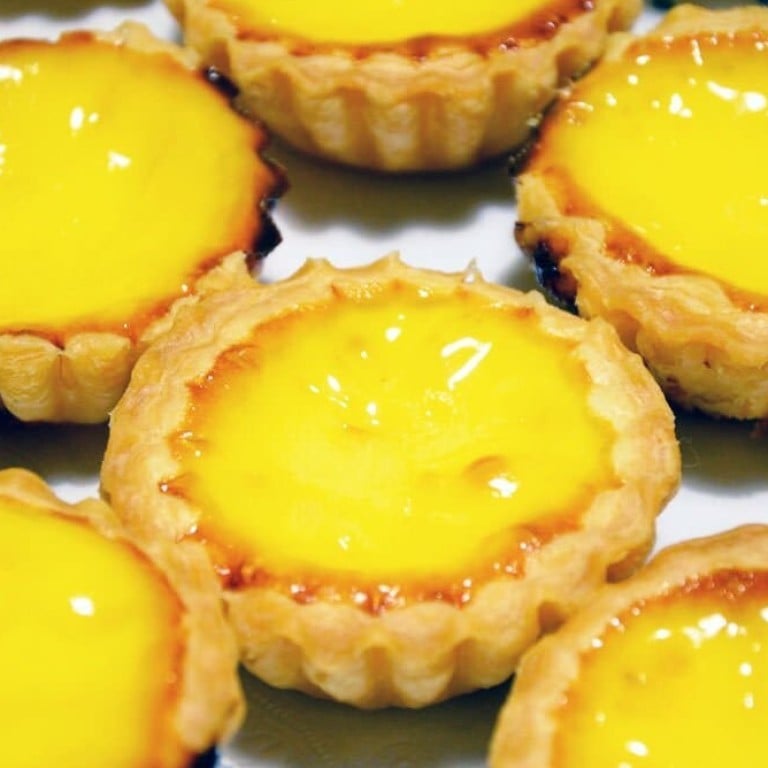
The history of egg tarts: from savoury to sweet, from medieval England to Hong Kong, from short crust to flaky pastry
- In the 1920s, the British introduced the custard tart to the city of Canton, now Guangzhou. Chinese chefs adapted it using their dim sum pastry skills
- The oldest known English custard tart recipe dates back to around 1450 and features in the second-oldest cookery book written in the English language
Cantonese egg tarts, with their silky smooth, eggy custard filling and flaky pastry crust, are hard to resist when walking past a Hong Kong-style bakery. It’s even harder when they’re fresh out of the oven.
For customers at Tai Cheong Bakery, one of Hong Kong’s oldest egg tart shops, the Cantonese treat isn’t just a delicious dessert, it’s the taste of their childhood.
“It’s the sweet and savoury mixed together. It’s very nostalgic for me,” says one hungry customer in between bites. “When I was young, my mum would come home every day with a box of egg tarts.”
“It’s the Hong Kong tradition. That’s why we love it,” says another. “We grew up eating this like a dessert or teatime treat.”
Found in bakeries and a must-have at the end of dim sum, the daan tat, as it is known in Cantonese, is a sentimental dessert in Hong Kong and across southern China, but its roots are not native to the region.
Unlike some European custard tarts, such as Portugal’s bruleed pastel de nata, the history of the Hong Kong egg tart is not as well known. Some fans assume it has Portuguese origins because of its similar flaky crust to the pastel de nata, but it’s believed that the daan tat is actually a variation of the British custard tart.
Celebrating the humble egg tart in Hong Kong
“If you look back at the history, the origin of the egg tart is from England,” says chef Chan Chun-hung, head instructor for Cantonese cuisine at the Vocational Training Council’s Chinese Culinary Institute. The dim sum chef, with more than four decades of experience in Cantonese cuisine, says that the British first brought custard tarts to southern China in the 1920s, where local chefs adapted the recipe before it was brought to Hong Kong after World War II.
So to understand how the Hong Kong egg tart came to be one of the city’s most beloved desserts, we first need to dive into the history of the British custard tart.
“It’s a taste sensation that we really enjoy,” says British food historian Marc Meltonville. “I think the reason that we [British people] like a custard tart so much is that it’s the combination of crunchy pastry followed by a slightly sort of melt-in-the-mouth sweet filling.”
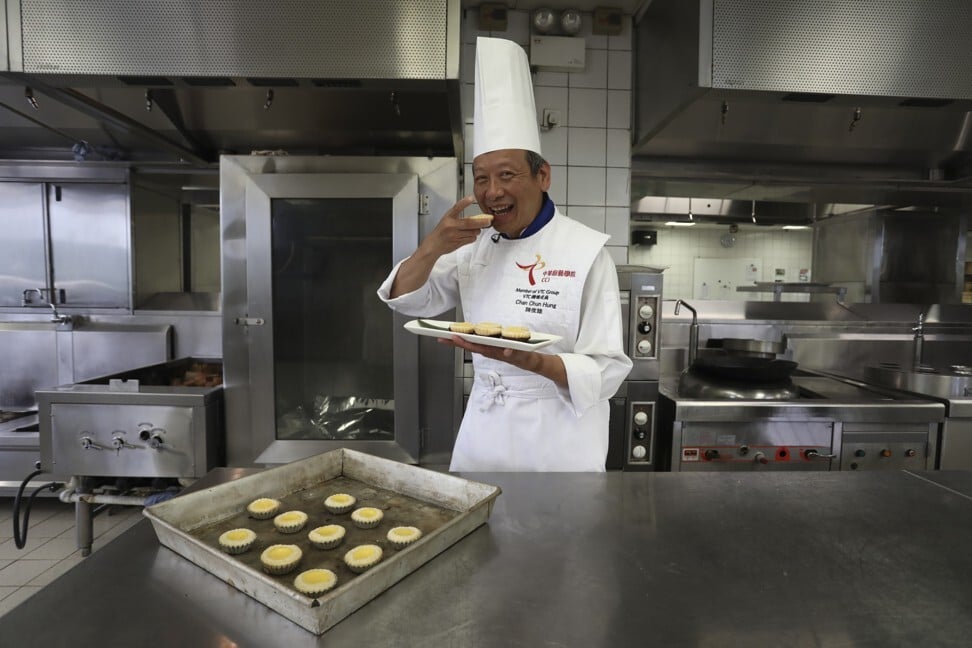
Britons’ obsession with custard tarts goes all the way back to medieval England, says Meltonville, 52, who has worked on Tudor food at Hampton Court Palace, a former royal palace in London, and specialises in how Europeans have dined for the past 1,000 years.
Some people associate England’s earliest custard tart with King Henry VIII. But Meltonville says while he and his court were known to enjoy a “type” of custard tart called the Maids of Honour – made with a flaky pastry and similar in style to the pastel de nata – the earliest recipe for a British custard tart, with a shortcrust pastry, was written down 40 years before Henry was even born.
“The earliest date we have for a custard tart recipe in England is around 1450 in a medieval cookbook called Two 15th Century Cookbooks. It is the second-oldest cookery book written in the English language,” Meltonville says. “This type of custard tart would have made up one of the courses for royal tables.
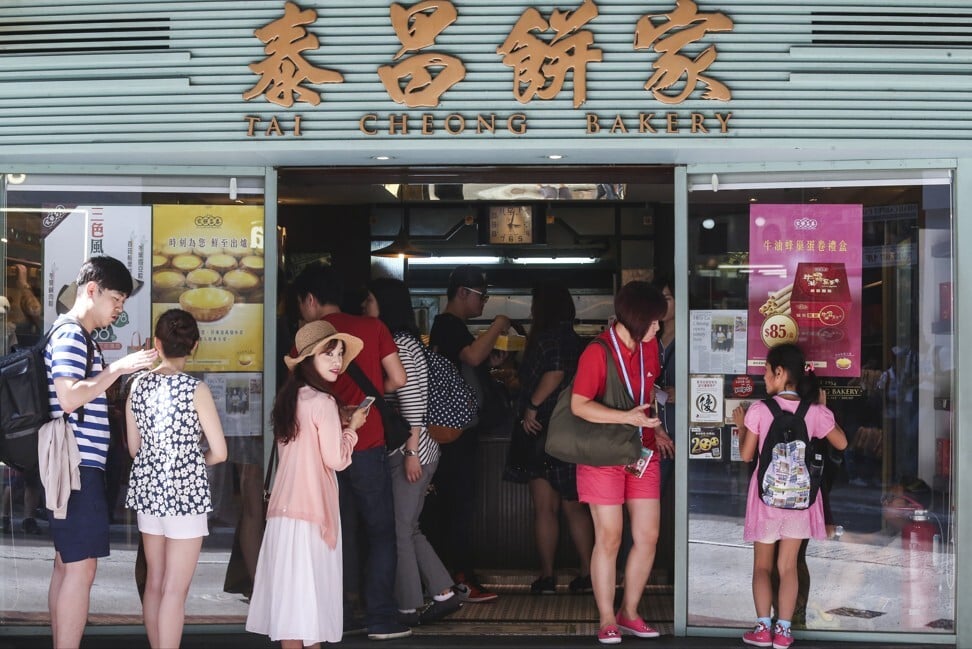
“These books were written for the rich and the royal, but that doesn’t mean ordinary people weren’t cooking custard tarts much earlier.”
The oldest recipe starts off “quite recognisably”, Meltonville explains, with cream, eggs and a sprinkling of sugar. But it also calls for “parsley, dates, prunes and bone marrow”.
Meltonville says the bone marrow was used to add creaminess to the custard and a buttery crisp to the base. The fruit was used for sweetness because only a sprinkling of sugar was used in the recipe, as it was extremely expensive at the time, having to be shipped in from Persia.

“I’ve made this tart quite a few times. It’s nice but remarkably unremarkable,” he says. “You don’t notice the taste of the little flecks of green in the custard, which are the parsley leaves. The custard tart is crisp on the outside and the custard is light, and it’s sweet from the fruit at the bottom. You wouldn’t find it odd at all to eat this. It’s just a little bit unusual, certainly to English tastes, to go mixing custard with a meat product.”
Jumping forward to the 17th century, Meltonville says it took chefs only 200 years to refine the custard tart recipe to what we would now consider a modern-day version – minus the bone marrow.
“By the time you get to the 17th century, there’s quite a move in England. We go through something called the ‘mini Ice Age’. Things get a bit cold, people have to wear more clothes and the dishes in the recipe books become a lot more ‘put your hands around a warm pot, keep yourself warm’ style of comfort foods,” he says.

“You see a lot … of set-cream style dishes. The custard tart seems to establish itself then as something that is a sweet dish with cream, eggs, milk and sugar. Nutmeg becomes really popular in England [at that time] and from then on you see a little nutmeg scraped on top.”
By the 19th century the custard tart had become part of England’s burgeoning afternoon tea culture, says Meltonville, cementing itself in the British food psyche. It is so beloved in England that when Britons sailed to foreign lands, so too did the recipe for custard tarts. “If you’re hundreds of miles from where you started off, that flavour will really bring your good memories back,” he says.
And that is what happened in the 1920s when the British introduced custard tarts to the southern Chinese city of Canton, now known as Guangzhou, says chef Chan, 60. Situated on the Pearl River, the city had been an important international trading port since the 1700s and it was also close to Hong Kong.
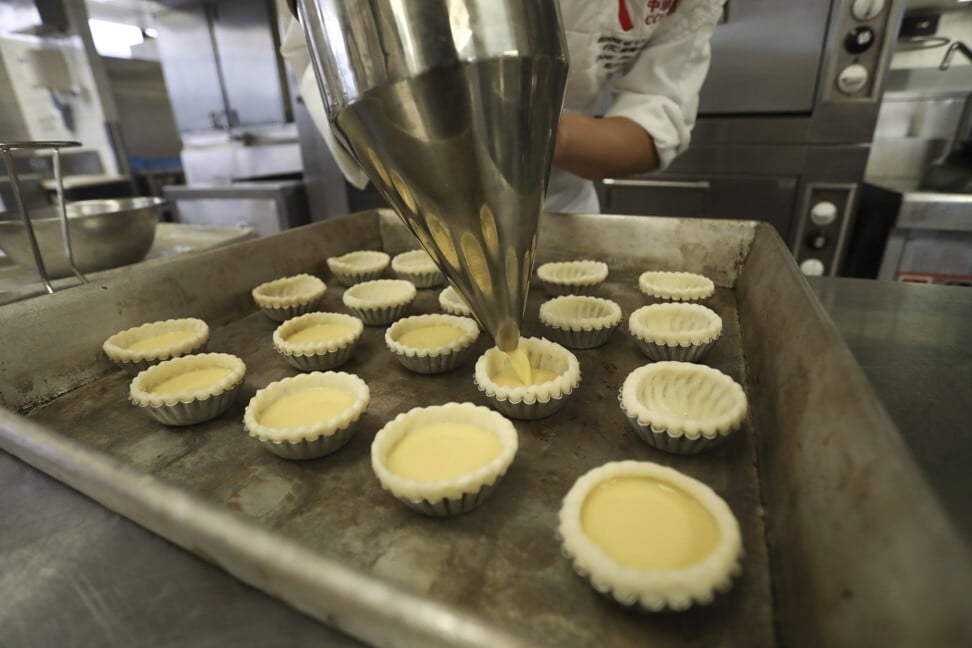
“Canton was quite open, so there were many foreigners there,” Chan explains. “Those taipans [wealthy foreign businessmen], they wouldn’t eat Chinese food often; they preferred to eat Western food.”
So when the wealthy British traders and officials moved to China, they would bring with them chefs who would make the beloved custard tarts as a taste of home. The Cantonese chefs who helped out in the kitchen watched how they were prepared.
“I’m guessing their English was not good, but the chefs watched how the tarts were made and then they tried to make their own version with their dim sum pastry skills,” Chan continues.
After the war, lots of wealthy Cantonese people moved to Hong Kong. They came with their chefs, who brought the method of making egg tarts to Hong Kong
“The English tarts used custard powder, but the Cantonese chefs weren’t familiar with it because it’s such a Western product, and it was expensive because it was imported. So the Chinese chefs only used eggs, sugar and milk.”
The Cantonese chefs also swapped the short crust pastry used in the British tarts for flaky pastry, which was commonly made for dim sum dishes like barbecue pork puffs, where the dough was made with pork lard instead of butter.
Once Cantonese chefs perfected their own recipes for the egg tarts, they opened bakeries and cafes where coffee, tea and pastries were served, says Chan. Previously, the English custard tarts were only eaten by foreigners, but now the local version was easily available to the masses.
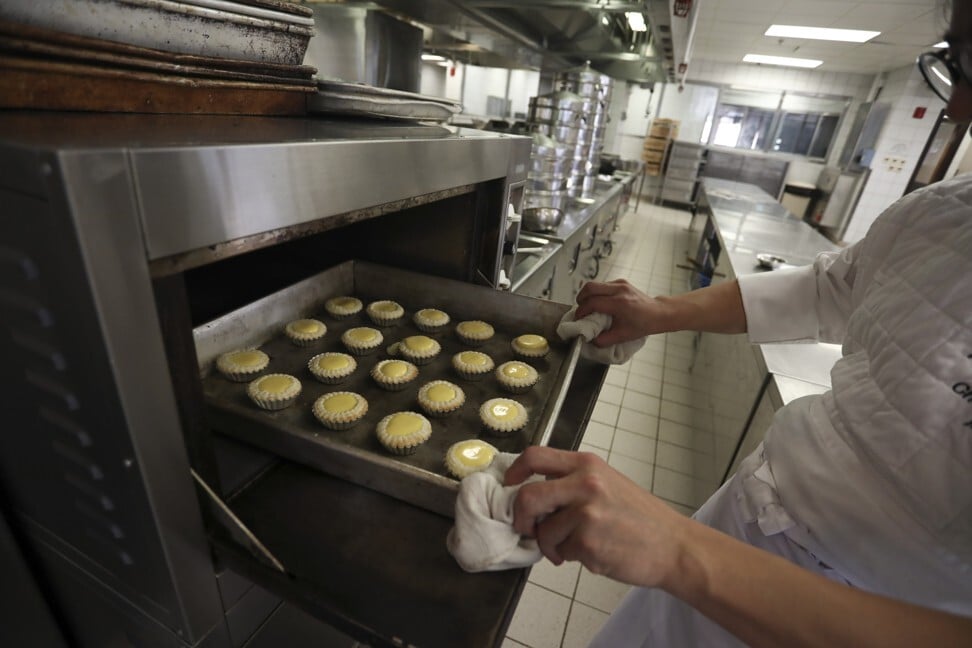
Originally the egg tarts were made in oval-shaped moulds, but that changed in the 1930s when flower-shaped moulds were made and everyone wanted to eat these prettier-looking egg tarts.
It wasn’t until after World War II in 1945 that egg tarts made their way to Hong Kong, which was a British colony at the time.
“After the war, lots of wealthy Cantonese people moved to Hong Kong. They came with their chefs, who brought the method of making egg tarts to Hong Kong,” says Chan.
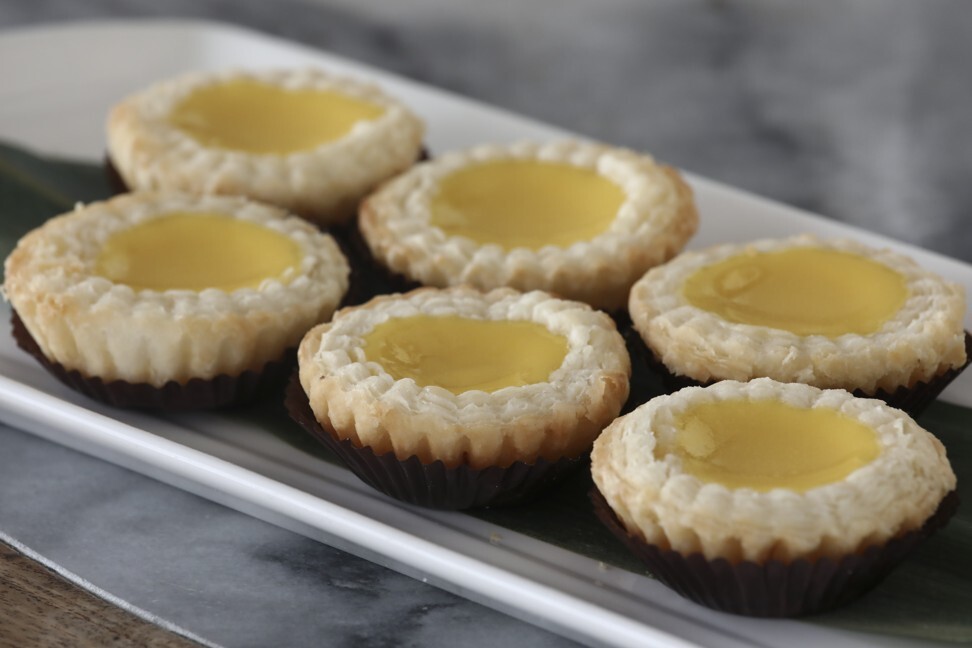
“That helped develop the city’s food culture, which wasn’t very high at the time. It’s because of these Cantonese chefs, and some Shanghainese chefs who came to Hong Kong, that the city’s culinary sophistication developed in a short period of time. Some of the chefs struck out on their own with bakeries and cafes.”
The sweet treats became so popular that bakeries, hotels, cafes and dim sum restaurants started selling this new dessert.
Hong Kong is still home to some of these original egg tart bakeries, such as Tai Cheong Bakery, which opened in the 1950s and still has a loyal following of hungry fans.
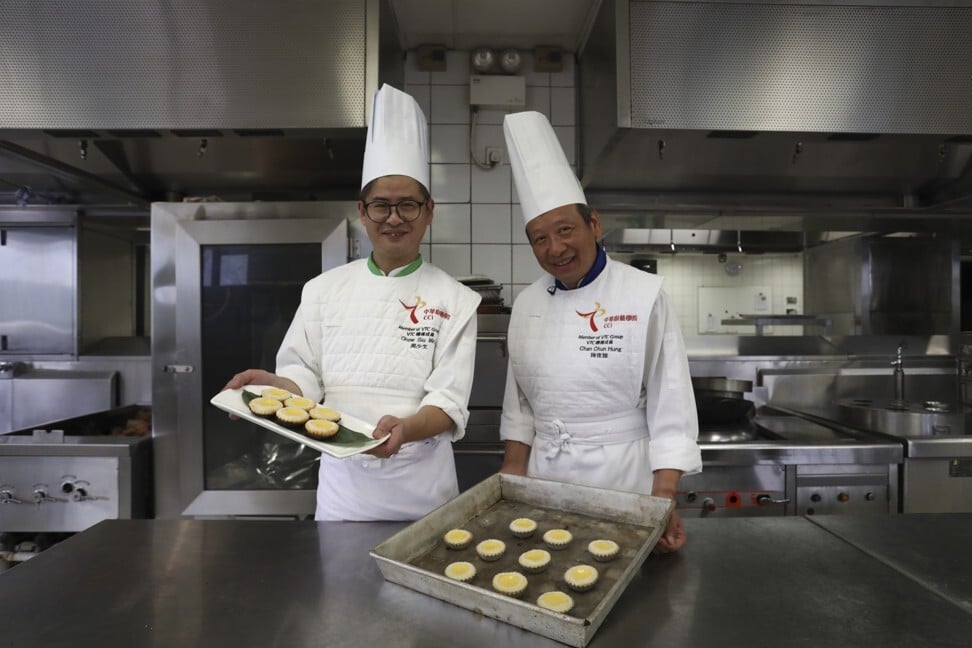
There are two types of egg tart in Hong Kong. The first has the traditional flaky crust, which takes two days to make and is served at dim sum, while the second is made with a short crust casing, which was developed later, as it was faster and easier to make.
Just as the British brought the custard tart to China, dim sum chefs who left Hong Kong to move abroad in the following decades also took their egg tart recipe.
That’s why no dim sum meal is complete without a Cantonese egg tart – no matter where you are in the world.
In the kitchen of the Chinese Culinary Institute in Hong Kong, Chan and fellow instructor Tony Chow Siu-man show us how to make the traditional flaky egg tart from scratch. It includes two types of dough that have to be refrigerated overnight, before being folded together, rolled out and folded again, with the process repeated until there are 36 layers.
The dough is cut up and massaged into dainty flower-shaped moulds. These moulds are again put in the refrigerator to chill while the custard filling is made. Chow combines several eggs, sugar, fresh and evaporated milk, then carefully fills the chilled moulds with the custard mixture, and bakes them for 10 minutes.
Fresh out of the oven – perhaps a few minutes later to avoid scalding your mouth – these egg tarts are heavenly. They are the perfect marriage of smooth, eggy custard and a flaky crust.












